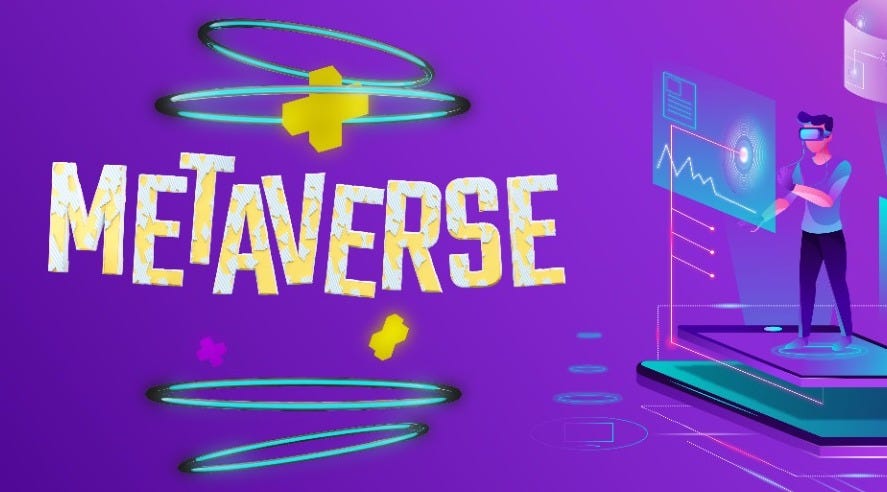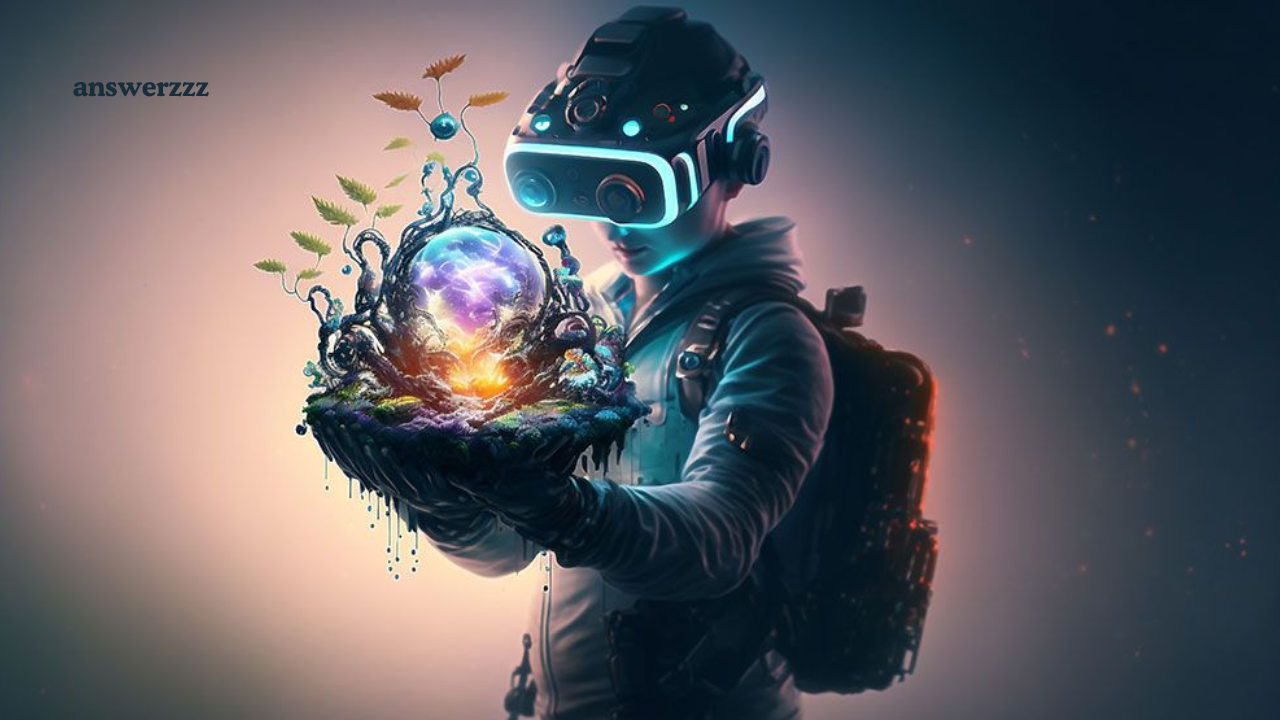The Metaverse has emerged as one of the most transformative concepts in technology, offering immersive virtual experiences that span gaming, social interaction, business, education, and more. Since its inception, the Metaverse has evolved rapidly, with significant advancements in virtual reality (VR), augmented reality (AR), artificial intelligence (AI), and blockchain technology. By 2026, Metaverse 2.0 is poised to redefine how we interact with digital environments and each other.
In this article, we will explore the new features and trends that are shaping Metaverse 2.0 and how they are likely to impact industries and individuals in the coming years.
1. The Rise of Hyper-Realistic Virtual Worlds

In Metaverse 1.0, users experienced virtual environments that were functional but often lacked the level of detail and realism that could truly immerse them in a digital world. However, by 2026, the Metaverse 2.0 will be marked by hyper-realistic virtual worlds. Powered by advancements in computer graphics, AI, and immersive technologies, these virtual spaces will resemble the real world more closely than ever before.
Enhanced Visual Fidelity
The primary hallmark of Metaverse 2.0 will be its stunning visual fidelity. With improvements in real-time rendering technologies, photorealistic avatars, and environments, virtual spaces will feel more lifelike. VR headsets will become more advanced, offering higher resolutions, wider fields of view, and lower latency, creating a seamless and immersive experience.
Advanced techniques like ray tracing will enable light to behave realistically in virtual environments, enhancing textures, shadows, and reflections. The result will be virtual worlds where users feel like they are truly “present” in the space.
Artificial Intelligence-Driven NPCs
Non-playable characters (NPCs) in virtual worlds will no longer be static or scripted. AI-powered NPCs will be able to engage in dynamic conversations, adapt to user behaviour, and respond intelligently to various situations. These NPCs will play a central role in creating a more lifelike and interactive experience, particularly in gaming, virtual shopping, and customer service.
2. Interoperability Across Platforms
One of the biggest challenges facing the Metaverse has been the lack of interoperability between different platforms. Currently, users are often restricted to specific virtual worlds, unable to bring their avatars, assets, or experiences with them as they move from one platform to another. However, Metaverse 2.0 will aim to overcome these barriers through the development of standards and protocols that enable seamless interoperability.
Cross-Platform Avatars and Assets
By 2026, users will be able to take their avatars, skins, and digital assets across various virtual worlds, creating a consistent experience regardless of the platform. This means that whether users are in a gaming environment, attending a virtual concert, or participating in a business meeting, they will be able to maintain a unified digital identity.
For example, a user’s digital clothing, accessories, or even their avatar’s personality traits could be transferred between platforms, allowing for more personalized experiences. Blockchain technology, with its ability to authenticate ownership and provenance, will play a crucial role in ensuring that users’ digital assets are portable and verifiable across platforms.
Open Standards and APIs
To make interoperability a reality, Metaverse 2.0 will rely on open standards and APIs (Application Programming Interfaces). These open-source technologies will allow developers to create applications and content that work seamlessly across different Metaverse environments. This collaborative approach will empower a diverse range of companies to contribute to the Metaverse ecosystem and ensure that users are not locked into any single platform or experience.
3. The Integration of Blockchain and NFTs
Blockchain technology and Non-Fungible Tokens (NFTs) have already made their mark on the Metaverse, particularly in the areas of digital ownership and transactions. By 2026, these technologies will become even more deeply integrated into Metaverse 2.0, creating new possibilities for creators, users, and businesses alike.
Decentralized Ownership of Digital Assets
Blockchain will continue to serve as the backbone for decentralized ownership within the Metaverse. Users will have true ownership of digital assets, including virtual real estate, fashion items, and collectables. NFTs will act as proof of ownership, allowing users to trade, sell, or transfer their assets securely.
One of the key trends will be the creation of decentralized autonomous organizations (DAOs) that govern virtual communities and environments. These DAOs will allow users to vote on decisions related to the development and management of virtual spaces, ensuring that the Metaverse remains a user-driven ecosystem.
Virtual Real Estate Investment
In Metaverse 2.0, virtual real estate will become a significant investment opportunity. With platforms like Decentraland and The Sandbox already allowing users to buy, sell, and develop virtual land, this trend will only accelerate. By 2026, virtual real estate will be integrated into a broader digital economy, where businesses, influencers, and even governments establish virtual headquarters, storefronts, and cultural spaces.
Virtual real estate investors will be able to create experiences like virtual theme parks, art galleries, and concert venues, which can be monetized through events, advertising, and commerce. Blockchain technology will ensure that transactions involving virtual land are secure, transparent, and easily traceable.
4. Virtual Economy and Digital Workplaces

The Metaverse 2.0 will usher in a new era of work, where physical office spaces are no longer a requirement. Instead, people will spend more time in virtual offices and workplaces, collaborating with colleagues from around the world in immersive, 3D environments.
The Future of Remote Work
The COVID-19 pandemic accelerated the shift toward remote work, and by 2026, this trend will evolve further within the Metaverse. Virtual offices will allow employees to interact with each other in real time, using avatars to hold meetings, brainstorm ideas, and work on projects.
Metaverse platforms will support collaborative tools like virtual whiteboards, 3D models, and real-time data sharing, making remote work more productive and engaging. Employees will no longer be constrained by geography, as teams from different parts of the world can meet in a shared virtual space, enhancing creativity and innovation.
Virtual Commerce and Advertising
The virtual economy in Metaverse 2.0 will thrive, with digital marketplaces becoming a central hub for commerce. Users will be able to buy everything from virtual clothing and accessories for their avatars to physical goods that are delivered in the real world. Virtual shopping malls and stores will be established, allowing brands to create immersive experiences that go beyond traditional e-commerce.
Advertising will also take a new form, with brands integrating their messages seamlessly into virtual environments. Virtual billboards, branded experiences, and influencer partnerships will become common in Metaverse 2.0, offering new ways for businesses to engage with customers and drive revenue.
5. Augmented Reality (AR) and Mixed Reality (MR) Experiences
While VR has dominated the early stages of the Metaverse, Augmented Reality (AR) and Mixed Reality (MR) will play a significant role in Metaverse 2.0. These technologies will blend the virtual and physical worlds, enabling users to interact with digital content in real-time while maintaining awareness of their physical surroundings.
AR-Enhanced Daily Life
By 2026, AR will be integrated into everyday life, enabling users to overlay digital content onto their physical environment. For example, users may interact with AR-powered ads while walking through the city, view 3D models of products in their living rooms before purchasing, or attend live events that combine physical and virtual elements.
Smart glasses and AR headsets will become more lightweight, affordable, and accessible, allowing users to seamlessly transition between the real and virtual worlds. This convergence of digital and physical spaces will open up entirely new possibilities for entertainment, education, and business.
MR Gaming and Entertainment
Mixed Reality (MR) will offer a more immersive gaming experience by blending virtual characters and objects with the real world. This could mean interacting with virtual creatures in your living room or exploring an adventure that spans both the digital and physical worlds. MR will offer unique opportunities for hybrid gaming experiences, where players can engage with digital content while maintaining a sense of presence in their surroundings.
6. AI and Personalization in the Metaverse
Artificial Intelligence (AI) will be at the forefront of Metaverse 2.0, driving personalization and creating more dynamic and tailored experiences for users.
AI-Driven Virtual Companions
One of the most exciting developments will be AI-driven virtual companions that can interact with users in highly personalized ways. These companions will be able to learn about the user’s preferences, habits, and behaviours, tailoring experiences and recommendations based on this data. Whether it’s a virtual assistant helping users navigate the Metaverse, a virtual shopping companion, or an AI-driven guide in an online game, these personalized interactions will redefine how users experience virtual worlds.
Dynamic Content Creation
AI will also play a crucial role in content creation within the Metaverse. From AI-generated art to procedurally generated environments and storylines, Metaverse 2.0 will empower users to experience new content that is constantly evolving. AI will assist creators in developing more immersive and engaging experiences, further enhancing the diversity of virtual worlds.
By 2026, the Metaverse will have evolved into Metaverse 2.0, a more immersive, interconnected, and user-driven virtual ecosystem. From hyper-realistic virtual worlds and AI-powered interactions to decentralized ownership through blockchain, the Metaverse will offer endless possibilities for gaming, work, education, and social interaction.
As these technologies continue to develop, Metaverse 2.0 will reshape industries, redefine human connection, and blur the lines between the physical and digital worlds, offering new opportunities for innovation, creativity, and exploration.




